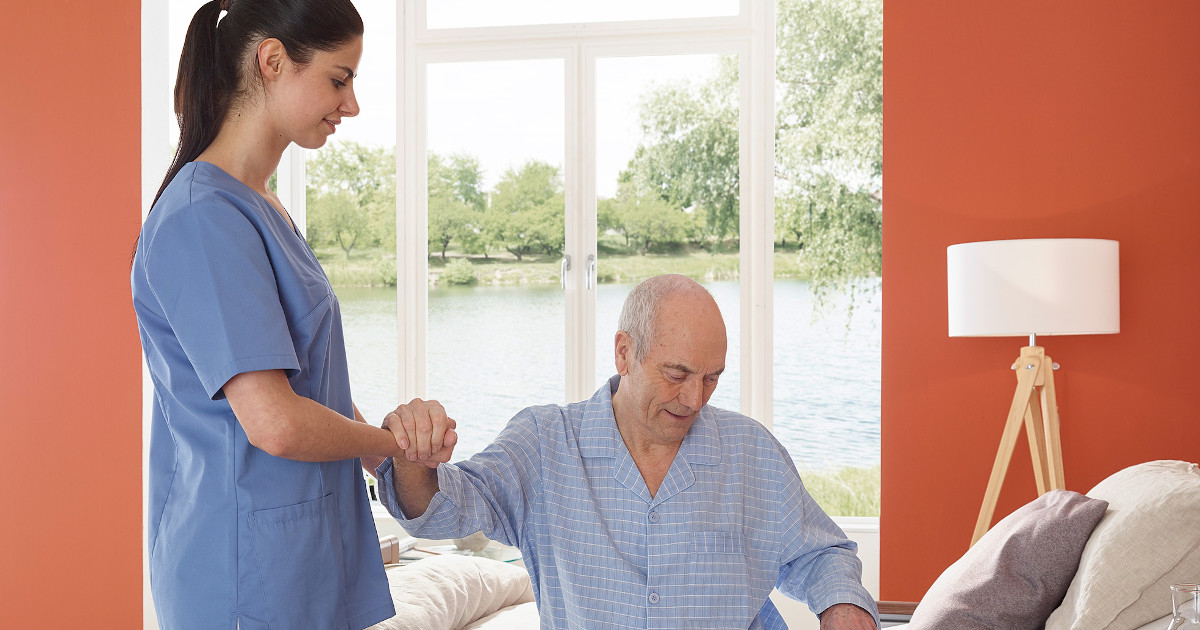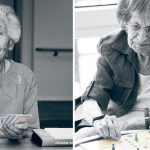From the age of 75, the risk of becoming a nursing case increases sharply. This is confirmed by figures from the German Federal Statistical Office. Seniors whose strength is declining feel limited. First, fitness declines, then the feeling of being helpless spreads. To counteract this, caregivers can instruct residents to mobilize themselves. This can be achieved with kinesthetics, a movement technique aimed at enabling seniors to move actively and in a self-determined manner.
Kinesthetics – what is it?
The term kinesthetics is derived from the ancient Greek words for „(to) move“ and „perception“. Kinesthetics founder Frank Hatch says, „Kinesthetics is the study of movement and perception, which in turn comes from movement – it is the study of the sensation of movement.“
Caregivers use the method to help themselves and those in need of care move fluidly and with less effort. A so-called movement dialogue occurs when two people interact and adapt to each other. Kinesthetics in geriatric care additionally pursues the goal of mobilizing seniors through coordinated movements. In this way, they become active participants in the activity.
This is how professionals can implement kinesthetics:
I. Subdividing movement activity
Kinesthetics divides activities, such as transferring or standing up, into parts. The idea behind this is that limbs can be moved and shifted individually. This takes pressure off the resident and caregiver.
Examples:
- When a caregiver assists a home resident in transferring, he or she can divide the movement into small sections. The senior first moves her lower leg, then her upper leg, and so on.
- Getting up in the morning: Some seniors lie stiff after many hours in bed. Here it can help if the caregiver prepares the senior for getting up. This is done by moving individual parts of the body with the patient beforehand. For example, the senior can bend his legs in and out of bed or move his head back and forth.
II. Moving appropriately
Basically, the size and shape of a part to be moved signal which movement is appropriate. This is also the reason why we roll exercise balls, for example, when we want to move them. Square objects, such as moving boxes, on the other hand, are difficult to roll. Intuitively, we would therefore push them. This principle can also be applied to caregiving. Each movement of the senior should be adapted to the part of the body that needs to be moved.
Example:
- When transferring, the resident rolls his or her hip better by moving it fluidly, rather than pushing it.
- If a senior lying in bed wants to push herself further up, this can often only be done with effort by rolling. In this case, it is a good idea for the resident to mobilize herself in divided, jerky movements.
III. movement dialogue
Interaction between touch and movement is an essential part of kinesthetics. It uses both partners – caregiver as well as cared-for – to support each other’s mobility. When both adapt to each other, more fluid movement can occur. In this way, mutual reaction leads to a movement dialogue. The goal remains the same: move together with as little effort as possible.
Example:
- If the resident wants to get up from the chair, the caregiver can reach under his with her shoulder. The senior straightens up as a result of the pull and both partners contribute their share to the activity.
- If the caregiver helps the senior sitting in bed out of bed by giving him or her a hand, the result is a pull-like movement that engages both partners.
IV. Leading and following
Kinesthetics is an interplay. People can develop mobility by following the movement of others. Ideally, it is impossible to say who leads and who follows. The caregiver can decide for each resident individually what assistance to offer and to what extent to lead or follow.
Example:
- The caregiver can respond to anxious residents by telling what movement the senior should make. In doing so, he or she can take more of a lead and make sure to divide the activity and make it mindful.
- Some seniors, on the other hand, are very responsive and desire to be more hands-on themselves. Again, the caregiver can provide an appropriate balance and be responsive to the senior.


